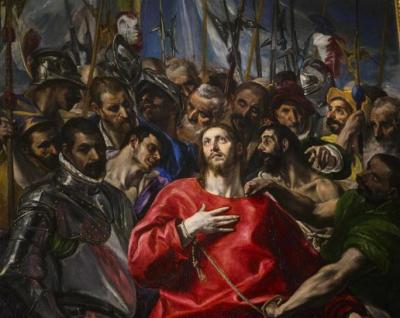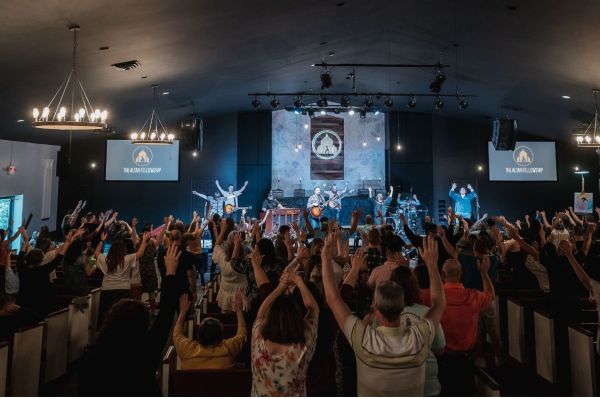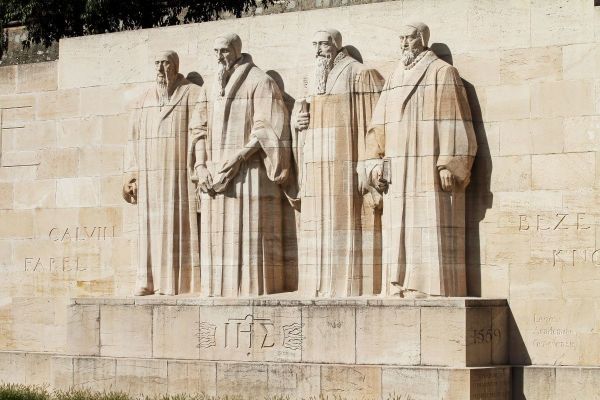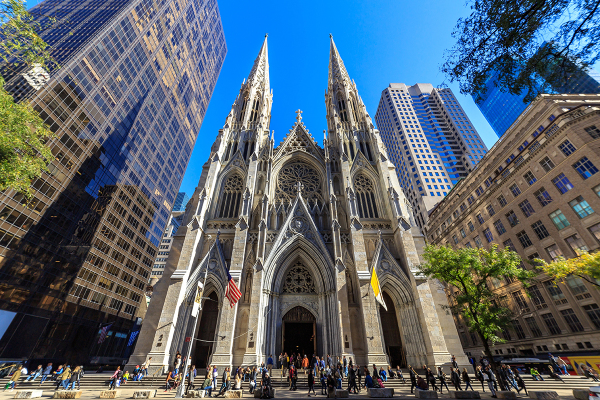Reflections on the Miracle of the Fish Feeding 4,000

On Dec. 6, the Gospel reading for Daily Mass was Christ's feeding of the thousands who followed him to the mountain for healing. Several important realizations hit me that evening and, while I'm not a theologian or anywhere close to an expert on the Bible, I'd like to offer them up for others' consideration.
With Christmas just around the corner, the priest's homily is an excellent reminder that Jesus cared about all of who we are — our souls and our body.
The Obvious Theological Lessons
As a child, I was told that this miracle and the Feeding of the Five Thousand could easily be explained by people pulling out food they had on their persons. In other words, Christ's miracle wasn't creating the meal – but rather inspiring others to provide for themselves and their neighbors rather than be selfish.
This interpretation has frequently warred with the idea that Jesus created the food. Perhaps foolishly, it took me until Dec. 4 to notice that Christ says "they...have nothing to eat." He also says he has "fear they may collapse" on the way home if the crowds are not fed.
So, the miracle itself is pretty sound. Just as sound is the long-established precedent that this and the Feeding of the Five Thousand set for Christ to truly feed the hungry thousands through His Sacrifice – both when He died and at each Mass. The physical food here represents the spiritual food that is His Body.
Priests and Private Miracles
I'm sure the evangelicals are chuckling at the Bible-ignorant Catholic. Stay with me! It only gets better.
In taking the reading literally, Jesus spoke only to the disciples about the logistical challenge of feeding thousands with seven loaves of bread "and a few fish." He then gave thanks, broke the bread, and had the disciples give the food to the crowds.
Why didn't Jesus give the bread Himself? Perhaps for the same reason He sent the apostles to drive out demons in His name, and later breathed the Holy Spirit upon them – to establish the apostles as the first clergy of the Christian Church. They take the food He has blessed and give it to the crowds.
Again, I'm just reflecting here, but it seems plausible that this is Christ showcasing how the apostles are His go-between – His Persona Christi, the people who later would act in the Person of Christ. Here, He gives them the authority to physically feed His flock. Later, that authority would turn to a spiritual one.
Coincidentally, as I was doing some brief research prior to writing this piece, I read a short but excellent piece about how this miracle seems to be Jesus' Gentile version of the Feeding of the Five Thousand. This lends more credence to the idea of priests being Jesus' holy delivery boys to both Gentiles and Jews.
The next question, then, is why did Christ only discuss this logistical challenge with the apostles? It's certainly possible that the crowds saw the lack of food, and that the disciples (I'm guessing) didn't have to return to any location to pick up more food despite only a handful of people providing food for thousands. The miracle may have been obvious to them, but the reading isn't clear.
What is clear is that the disciples knew the full details. Yet there is no mention of them telling any of the four thousand about it. Why not? Why not tell the full miracle so that all would be not just converted, but be the most ardent converts yet?
I don't have an answer, but I do have a thought – there is a necessity of inner reflection before speaking of knowledge. As I wrote the paragraph just above, I realized that this may be why Jesus demanded so many of His miracles not be told to the public. Perhaps the recipients of His Grace, or those the recipients would tell, were not able to comprehend the miracle to its full extent?
Helping Others
Finally, the priest pointed out that the apostles aren't just giving bread and fish to people. They are providing food on behalf of Jesus Christ to people who are might collapse on the way home – and do not have their own sustenance. The priest's homily focused almost singularly on the fact that the apostles are doing Christ's work to help the four thousand. He reminded us that in Advent, we should go further out of our way to follow the apostles' example – to provide for the needs of those in and out of our midst.
Indeed, the priest's homily is applicable to us all today as an example of Christian compassion in action.
Reinforcements
Like many (most? all?) Christians, I struggle to trust God from time to time. For me, it's often a question of the logic of trusting that an all-powerful Being with whom I cannot have an easy conversation and whom I have never seen in an easily identifiable fashion will – if I let Him – ensure that my life is imbued with meaning and will continue in infinite happiness.
The readings on Dec. 4 provided reinforcements for my sometimes-flagging faith. The simple logic of Christ's work with the apostles and the four thousand have provided some much-needed reflection about how His Church is the straightest path to eternal happiness.
At that time: Jesus walked by the Sea of Galilee, went up on the mountain, and sat down there. Great crowds came to him, having with them the lame, the blind, the deformed, the mute, and many others.
They placed them at his feet, and he cured them. The crowds were amazed when they saw the mute speaking, the deformed made whole, the lame walking, and the blind able to see, and they glorified the God of Israel.
Jesus summoned his disciples and said, "My heart is moved with pity for the crowd, for they have been with me now for three days and have nothing to eat. I do not want to send them away hungry, for fear they may collapse on the way."
The disciples said to him, "Where could we ever get enough bread in this deserted place to satisfy such a crowd?"
Jesus said to them, "How many loaves do you have?" "Seven," they replied, "and a few fish."
He ordered the crowd to sit down on the ground. Then he took the seven loaves and the fish, gave thanks, broke the loaves, and gave them to the disciples, who in turn gave them to the crowds.
They all ate and were satisfied. They picked up the fragments left over–seven baskets full.
Originally posted at Juicy Ecumenism.





















